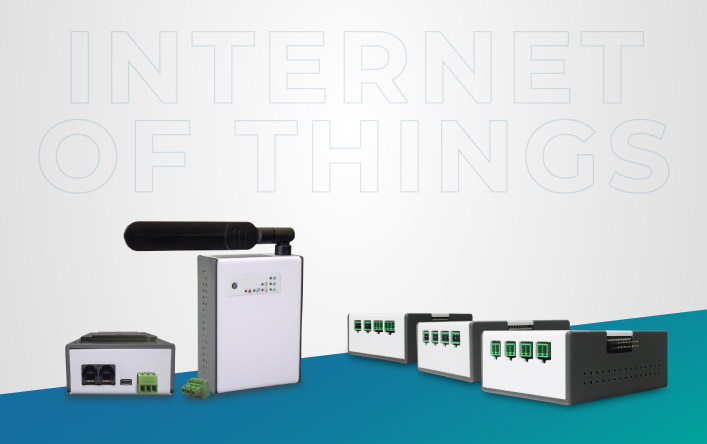Some of the new features are here to expand the business opportunities for integrators who have already entered the IoT market. Meet the new ITS models featuring 3G for IoT connectivity, and the modules for expanding your options of sensors on Khomp Endpoints.
ITS 3G
Two new Standalone Sensor models bring more options to scenarios where only one endpoint is enough to collect and transmit data from the monitored environment.
The ITS 302 has the same two passive/active 1-Wire ports of the 2G models, plus a new Actuation Relay to provide an immediate response to a monitored entity, which can then trigger devices remotely. Communication with the cloud is handled by the MQTT protocol, which is responsible for storing the information collected by the sensors and transmitting it using the GSM 3G data network.
The purpose of the 3G communication is to meet the needs of locations that do not have good data communication infrastructure, such as an available LAN with Internet connection.
The other model, ITS 312, has all the features of the previous model, and internal sensors for temperature and moisture, which make it possible to read such information from the environment. This way, you can monitor both the location where the ITS 312 is installed and the environment that hosts the sensors connected to it.
Extension modules for IoT Endpoints sensors
The new extension modules for IoT Endpoints extend the monitoring capabilities in the areas of Agribusiness, Industry 4.0, Health Care, and Corporate. They are available for the following Khomp products: LoRa Endpoint, IEEE 802.15.4 Endpoint, and ITS 302 and ITS 312 Endpoints.
The EM S104 features three moisture sensors and one temperature sensor for soil measurement in agriculture applications. The EM C104 has four electric current sensors (4–20 mA) that monitor the operation of devices and inform maintenance data by means of current variation. Finally, the EM R102 has two relays and two binary contacts for actuation, allowing the IoT Endpoint to remotely trigger devices such as door opening engines, buttons, triggers, etc.
Would you like to know more?
Some cases are already being developed for these new modules and will soon be posted here on Khomp’s Blog. Subscribe to the Khomp newsletter and get the latest news!
